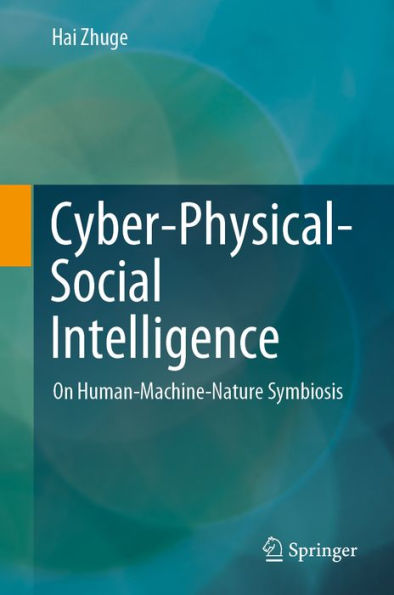This book explores next-generation artificial intelligence based on the symbiosis between humans, machines and nature, including the rules and emerging patterns of recognition, and the integration and optimization of various flows through cyberspace, physical space and social space. It unveils a reciprocal human-machine-nature symbiotic mechanism together with relevant rules on structuring and evolving reality, and also proposes a multi-dimensional space for modelling reality and managing the methodologies for exploring reality. As such it lays the foundation for the emerging research area cyber-physical-social intelligence. Inspiring researchers and university students to explore the development of intelligence and scientific methodology, it is intended for researchers and broad readers with a basic understanding of computer science and the natural sciences.
Next-generation artificial intelligence will extend machine intelligence and human intelligence to cyber-physical-social intelligence rendered by various interactions in cyberspace, physical space and social space. With the transformational development of science and society, a multi-dimensional reality is emerging and evolving, leading to the generation and development of various spaces obeying different principles. A fundamental scientific challenge is uncovering the essential mechanisms and principles that structure and evolve the reality emerging and evolving along various dimensions. Meeting this challenge requires identifying the basic relations between humans, machines and nature in order to reveal the cyber-physical-social principles.
This book explores next-generation artificial intelligence based on the symbiosis between humans, machines and nature, including the rules and emerging patterns of recognition, and the integration and optimization of various flows through cyberspace, physical space and social space. It unveils a reciprocal human-machine-nature symbiotic mechanism together with relevant rules on structuring and evolving reality, and also proposes a multi-dimensional space for modelling reality and managing the methodologies for exploring reality. As such it lays the foundation for the emerging research area cyber-physical-social intelligence. Inspiring researchers and university students to explore the development of intelligence and scientific methodology, it is intended for researchers and broad readers with a basic understanding of computer science and the natural sciences.
Next-generation artificial intelligence will extend machine intelligence and human intelligence to cyber-physical-social intelligence rendered by various interactions in cyberspace, physical space and social space. With the transformational development of science and society, a multi-dimensional reality is emerging and evolving, leading to the generation and development of various spaces obeying different principles. A fundamental scientific challenge is uncovering the essential mechanisms and principles that structure and evolve the reality emerging and evolving along various dimensions. Meeting this challenge requires identifying the basic relations between humans, machines and nature in order to reveal the cyber-physical-social principles.

Cyber-Physical-Social Intelligence: On Human-Machine-Nature Symbiosis

Cyber-Physical-Social Intelligence: On Human-Machine-Nature Symbiosis
eBook (1st ed. 2020)
Related collections and offers

Product Details
| ISBN-13: | 9789811373114 |
|---|---|
| Publisher: | Springer-Verlag New York, LLC |
| Publication date: | 11/12/2020 |
| Sold by: | Barnes & Noble |
| Format: | eBook |
| File size: | 33 MB |
| Note: | This product may take a few minutes to download. |
